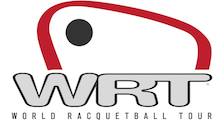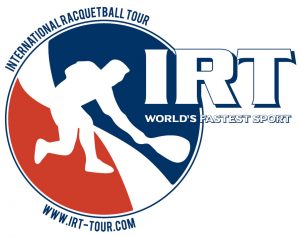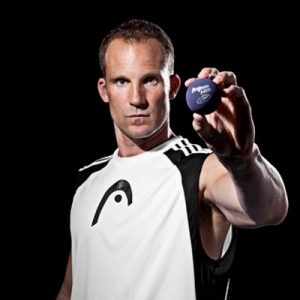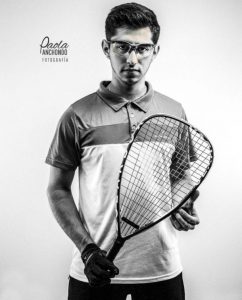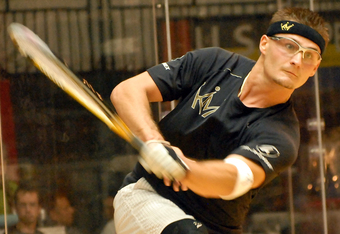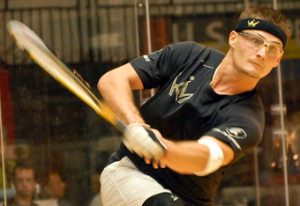
On 11/20/18, the 12-month rolling IRT rankings shifted enough points away from last season to account for a pretty monumental set of movements in the rankings table: Alejandro Landa ascended to #1 for the first time ever, while the sports most dominant player Kane Waselenchuk fell to #6.
Kane’s descent was due to two primary factors:
1. he missed a number of events in the second half of the 2017-18 season, and
2. There was a sudden drop in the number of events in the first half of the 2018-19 season.
When the IRT posted the update to facebook, A predictable firestorm of comments arose, criticizing the rankings and the ranking system. I weighed in, pondering initially why it mattered (other than tourney seeding of course) what the rankings were in November, but many believe a different ranking system is needed.
Here are some Ranking system alternatives with some personal analysis. I tried to emulate all the solid suggestions on the facebook thread from various players and commenters. The working spreadsheet is available at Google Spreadsheets here. I’ll just list the top 10 players ranked though I extended the logic down to the top 20 running players or so throughout the last 2+ seasons.
Important Caveats to the below:
- I have only included points earned in Tier 1s and Grand Slams. Some players (especially Landa and Parrilla) in reality have a decent amount more points thanks to success in non-Tier 1 events that still remain on their books.
- I have also only included the core point totals earned per tournament, not bothering to figure out the slight point additions based on games won for simplicity. In other words; if you made the semis I gave you 220 points though you may have lost the semis in a breaker and thus really earned 222 or 224 points.
- There’s a couple of players outside the top 10 with points discrepancies I cannot reconcile with this simplistic logic. Its likely also due to playing non-tier 1 events. In the grand scheme of this analysis though, it shouldn’t matter.
Current Ranking System: utilizes a 12-month rolling calendar schedule that expires points the 366th day after the event occurs on an automatic basis. It also drops all low results to “baseline” the rankings at 9 events. More is available describing the logic at this IRT link and at the Current online rankings.
The exact rankings as of 11/20/18 that started all of this:
| player | Points | Rank |
|---|---|---|
| Landa, Alejandro | 2116.3 | 1 |
| Carson, Rocky | 2112.18 | 2 |
| De La Rosa, Daniel | 1986.16 | 3 |
| Franco, Sebastian | 1674.15 | 4 |
| Murray, Samuel | 1628.03 | 5 |
| Waselenchuk, Kane | 1500.42 | 6 |
| Mercado, Mario | 1496.02 | 7 |
| Beltran, Alvaro | 1490.01 | 8 |
| Parrilla, Andree | 1432.15 | 9 |
| Allen, Jansen | 1152.02 | 10 |
Issue with this system: Kane is too low given he’s currently riding a 66 match winning streak, penalizes players too much for missing time with injury.
Alternative #1: just use Season To Date Rankings. The current season has had just two events thanks to several events held in the fall of last year falling off the schedule. The current Season-to-date rankings are:
| Player | Points | Rank |
|---|---|---|
| Carson, Rocky | 840 | 1 |
| Waselenchuk, Kane | 800 | 2 |
| De La Rosa, Daniel | 600 | 3 |
| Parrilla, Andree | 590 | 4 |
| Landa, Alejandro | 520 | 5 |
| Franco, Sebastian | 520 | 6 |
| Murray, Samuel | 480 | 7 |
| Mercado, Mario | 390 | 8 |
| Diaz, Jose | 390 | 9 |
| Bredenbeck, Jake | 270 | 10 |
So, the top of this table looks normal enough: Rocky Carson is above Kane, but Kane missed the first event of the year. Thanks to a hot start and a semis appearance at the US Open, Andree Parrilla is ranked 4th season-to-date. Alvaro Beltran, a mainstay in the top 10 for a decade, is nowhere to be seen (he missed the first event, and was upset early in the second event of the season). Landa drops to #5 here even though he has the most wins on tour outside of Kane in the last two years.
Issue with this system: not enough data, too much recency bias.
Alternative #2: Rank based just on last 9 events played. This system excludes any missed events and totals the points from the last 9 times the player got on the court. In some cases, we had to go back to the beginning of the 2016-17 season to get 9 events.
| Player | Points | Rank |
|---|---|---|
| Waselenchuk, Kane | 4300 | 1 |
| Carson, Rocky | 2400 | 2 |
| Landa, Alejandro | 2300 | 3 |
| De La Rosa, Daniel | 2230 | 4 |
| Franco, Sebastian | 1760 | 5 |
| Parrilla, Andree | 1740 | 6 |
| Pratt, Charlie | 1670 | 7 |
| Murray, Samuel | 1620 | 8 |
| Beltran, Alvaro | 1540 | 9 |
| Mercado, Mario | 1490 | 10 |
This system obviously shows how dominant Kane is; by giving everyone the benefit of the doubt and removing all their missed events, all players are showing their absolute best possible results. Two notably high players here are again Parrilla (who we had to dip well into the 2016-17 season to get the 9th played event) and Charlie Pratt, who required us to go back more than two calendar years to find enough played events to qualify. Even then some top 20 players don’t have 9 events played (specifically guys like Rodrigo Montoya and Javier Mar).
Issues with this system: does not reward “touring” players, over-rewards players who miss a number of events, goes back “too far” to get results in some cases.
Alternative #3: Just rank based on the last 9 running events, eliminating Calendar dates.
| Player | Points | Rank |
|---|---|---|
| Carson, Rocky | 2100 | 1 |
| Landa, Alejandro | 2080 | 2 |
| De La Rosa, Daniel | 1920 | 3 |
| Murray, Samuel | 1620 | 4 |
| Franco, Sebastian | 1610 | 5 |
| Waselenchuk, Kane | 1500 | 6 |
| Mercado, Mario | 1490 | 7 |
| Beltran, Alvaro | 1390 | 8 |
| Parrilla, Andree | 1320 | 9 |
| Allen, Jansen | 1170 | 10 |
This system keeps tournaments hanging on irrespective of the date, so should address the complaints about “not having tournaments to defend points.” So to get the last 9 running Tier 1s and/or Grand Slams we just sum the points dating back to the 11/2/2017 event.
However, this ranking almost exactly mirrors the Current rankings. Rocky and Landa are flipped at the top, Sebastian Franco and Samuel Murray are flipped at the 4/5 spot, and Kane is still at #6. In fact, the players in spots #7 through #18 are also identical in this system to the current 12-month rolling calendar. Why? Because all these players are playing nearly all the events, rarely missing events, and thus the point totals are basically the same.
Issue with this system: Does not address the issue; Still penalizes Kane for missing so much time in early 2018.
Alternative #4: Total Points, running 2-year calendar. This system is basically the same system as is in place now, except it uses a 2-year rolling calendar instead of one. I dropped each player’s two lowest scores (to emulate dropping just one low score for the current 12-month calendar season) and then ranked them:
| Player | total Points | Rank |
|---|---|---|
| Carson, Rocky | 4890 | 1 |
| Waselenchuk, Kane | 4700 | 2 |
| Beltran, Alvaro | 3160 | 3 |
| Landa, Alejandro | 3110 | 4 |
| De La Rosa, Daniel | 2750 | 5 |
| Franco, Sebastian | 2570 | 6 |
| Murray, Samuel | 2490 | 7 |
| Parrilla, Andree | 2190 | 8 |
| Mercado, Mario | 1820 | 9 |
| Allen, Jansen | 1570 | 10 |
I think this is actually a pretty good ranking, taking into account results in events played plus tour event participation. Rocky is 1, Kane is 2, so Kane’s missed time penalizes him slightly but not overtly so. Its important to remember, not only did Kane miss the four events to injury in early 2018, he’s also missed four OTHER events in the last two running calendar years for various reasons. For similar reasons (missed events), both Landa and Parrilla are lower than they might be, while Beltran may be slightly higher than he should be, based on recent rankings.
Issue with this system: none really for me.
Alternative #5: Keeping points for tourneys that drop off Calendar. Kane noted he’s dropped so far because there’s been a lack of tournaments this fall for him to “defend” points from last season. So I adjusted the points sums to go back further in time to capture more tournaments. The numbers below basically are a sum of all points earned from every tournament that happened past the 2017 US Open, totaling 11 events in all:
| Player | Points | Rank |
|---|---|---|
| Carson, Rocky | 2700 | 1 |
| Landa, Alejandro | 2300 | 2 |
| Waselenchuk, Kane | 2300 | 3 |
| De La Rosa, Daniel | 2230 | 4 |
| Franco, Sebastian | 1980 | 5 |
| Murray, Samuel | 1860 | 6 |
| Beltran, Alvaro | 1690 | 7 |
| Mercado, Mario | 1640 | 8 |
| Allen, Jansen | 1480 | 9 |
| Parrilla, Andree | 1320 | 10 |
In this system, Rocky is #1, then Kane and Landa are tied for #2 (I put Landa 2nd because throughout all of this Landa has a number of points from non-Tier 1 events that slightly elevate his ranking over his peers). The rest of the rankings 4-20 more or less mirror the current rankings that expire points after the 365th day.
I like this option too; it seems to address the issue of tournaments falling off the calendar in a rather simple way.
Issue with this system: i’m not sure this system would “protect” any players besides Kane who go out with injury. Kane wins a lot of points per event played and can “make up” several tournaments worth of points for a normal tour player each time. If someone ranked in the 10-15 range missed a significant amount of time … they’d be buried in the rankings.
Other Alternatives explored:
- I looked at average points earned in tournaments for each player for a one-year and two-year rolling period. The problem with using an average is that missed tournaments basically destroy the average. Kane ranks just 9th in average tourney points earned in the last calendar year, while Landa drops to 5th if you extend that average to two years. Both results do not seem valid.
Conclusion: I think the simplest solution may just be to expand the system from a rolling 1-year to a rolling 2-year calendar (Alternative #4). This will smooth out periods of absence for Kane and reward a longer period of excellence overall.
This suggestion also has the added benefit of representing a simple additional burden on the tour (and John Scott) to maintain. Any more complex system might be too much of a burden to maintain in an ongoing fashion.
However … I do believe that the end of season rankings should only take into account the points earned in that season. It would make no sense to have last season’s results impact this season’s end-of-season rankings. So perhaps this is all just an exercise to find a better “seeding” system that does a better job of smoothing out the rankings to better indicate at any given point in time who is ranked where. I am not advocating at this time to really change the way the rankings are done for the purposes of declaring a season-ending champ.
If you have different suggestions, I can run other scenarios as well. Feel free to comment or drop me a line.


